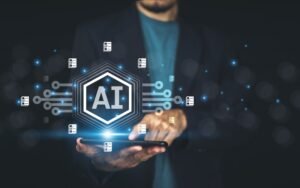Artificial Intelligence (AI) has rapidly evolved from a futuristic dream to an indispensable part of our daily lives. From voice assistants like Siri and Alexa to recommendation systems on Netflix and Amazon, AI-powered tools are now woven into the fabric of modern society. But as we continue to push the boundaries of what AI can achieve, a new frontier is emerging: Agentic AI.
Agentic AI refers to intelligent systems that possess agency—the ability to act independently, make decisions, and collaborate with humans and other agents. It marks a shift from mere automation to autonomous action and goal-directed behavior, unlocking new possibilities for business, research, and personal productivity.
This article delves deep into the concept of Agentic AI, how it differs from traditional AI, its key characteristics, real-world applications, ethical considerations, and what the future holds for this transformative technology.
1. What is Agentic AI?
At its core, Agentic AI goes beyond traditional, rule-based automation. It involves systems that can:
✅ Sense their environment
✅ Interpret data and contextual information
✅ Decide what actions to take based on goals and constraints
✅ Act autonomously to achieve objectives
✅ Learn and adapt over time
In essence, Agentic AI combines perception, reasoning, decision-making, and execution in a dynamic loop, mimicking aspects of human intelligence and agency.
2. Key Characteristics of Agentic AI
Here are the fundamental features that define Agentic AI:
🔹 Autonomy
Agentic AI can operate independently of constant human oversight. It can take initiative, solve problems, and pursue tasks proactively.
🔹 Goal-Oriented Behavior
Unlike conventional AI that reacts to direct commands, Agentic AI systems understand objectives and prioritize actions to achieve them.
🔹 Context Awareness
Agentic AI doesn’t operate in a vacuum—it analyzes its environment and adapts to changes, making it highly responsive.
🔹 Decision-Making and Planning
Such systems can evaluate different options, consider trade-offs, and make informed decisions to reach their goals.
🔹 Learning and Adaptation
Agentic AI is capable of learning from past experiences, improving performance, and refining its strategies over time.
🔹 Collaboration
Agentic AI doesn’t replace humans—it augments human capabilities, working alongside people to achieve better outcomes.
3. Agentic AI vs. Traditional AI
To better understand the concept, let’s compare Agentic AI with traditional AI systems:
| Feature | Traditional AI | Agentic AI |
|---|---|---|
| Autonomy | Typically reactive and dependent | Proactive, autonomous, takes initiative |
| Goal Orientation | Follows explicit commands | Pursues broader, evolving objectives |
| Decision-Making | Limited, rule-based | Context-aware, dynamic decision-making |
| Adaptation | Minimal or static | Continuously learns and adapts |
| Human Collaboration | Limited interaction | Works alongside humans, collaborates |
| Examples | Chatbots, search algorithms | Autonomous vehicles, digital twins |
This comparison highlights how Agentic AI represents a more advanced, flexible, and human-like form of intelligence.
4. Real-World Applications of Agentic AI
Let’s explore how Agentic AI is already transforming various industries and applications:
A. Autonomous Vehicles
Self-driving cars are a prime example of Agentic AI in action. These vehicles perceive their environment using sensors and cameras, decide on the best routes, respond to changing traffic conditions, and collaborate with human drivers or other vehicles.
B. Intelligent Digital Assistants
Agentic AI powers digital assistants that go beyond simple commands. They can proactively suggest actions, schedule meetings, find relevant information, and help users manage tasks.
C. Robotics and Manufacturing
In advanced manufacturing, Agentic AI-driven robots can monitor production lines, detect anomalies, and adjust workflows in real-time, improving efficiency and safety.
D. Financial Services
Agentic AI systems can analyze market trends, make autonomous trading decisions, and adjust investment strategies based on dynamic market conditions.
E. Healthcare
AI-powered diagnostic agents can analyze patient data, suggest treatment options, and collaborate with doctors to deliver personalized care.
F. Smart Energy Management
Agentic AI can optimize energy usage in buildings by adjusting heating, lighting, and cooling systems based on real-time data and occupancy patterns.
5. Benefits of Agentic AI
✅ Enhanced Productivity
Agentic AI can take over routine, repetitive tasks, freeing up human talent for higher-level work.
✅ Better Decision-Making
By analyzing complex data and considering multiple variables, Agentic AI can help organizations make faster, more informed decisions.
✅ Personalization and Customer Experience
Agentic AI can tailor services and recommendations to individual users, creating richer, more engaging experiences.
✅ Cost Savings
By optimizing workflows and reducing errors, Agentic AI can reduce operational costs.
✅ Innovation
Agentic AI enables organizations to develop new products and services that were previously impossible or too costly to implement.
6. Challenges and Ethical Considerations
While the potential is vast, Agentic AI also raises important questions and challenges:
A. Trust and Transparency
How can we ensure that autonomous AI agents act in line with human values and organizational goals? Transparency in decision-making processes is crucial to building trust.
B. Accountability
When an Agentic AI system makes a decision, who is responsible for the outcome? Defining accountability frameworks is essential.
C. Data Privacy
Agentic AI relies on vast amounts of data to make informed decisions. Safeguarding user privacy and ensuring ethical data use are critical.
D. Bias and Fairness
AI systems can inherit biases from training data. Continuous monitoring and refinement are necessary to avoid unfair or discriminatory outcomes.
E. Human-AI Collaboration
Agentic AI should augment—not replace—human roles. Organizations must focus on reskilling workers and ensuring human oversight in AI-driven systems.
F. Security Risks
Autonomous agents can become targets for cyber attacks or manipulation. Robust security measures are essential to prevent malicious use.
7. Designing and Implementing Agentic AI Systems
Building Agentic AI requires thoughtful design and robust engineering. Here’s how organizations can start:
Step 1: Identify Goals and Use Cases
Begin by defining clear objectives for the AI system. What problems are you trying to solve? What outcomes do you want to achieve?
Step 2: Gather High-Quality Data
Agentic AI needs accurate, relevant, and diverse data to make effective decisions. Ensure your data pipelines are clean, secure, and unbiased.
Step 3: Develop Adaptive Algorithms
Use machine learning, deep learning, and reinforcement learning to create models that can learn and adapt over time.
Step 4: Integrate Sensors and Context Awareness
For physical agents (e.g., robots, vehicles), integrate sensors to capture real-time environmental data.
Step 5: Establish Human Oversight and Feedback
Agentic AI should collaborate with humans. Implement feedback loops to ensure continuous improvement and alignment with human goals.
Step 6: Test and Refine
Before deployment, extensively test your system in controlled environments. Refine algorithms based on real-world performance.
Step 7: Monitor and Govern
Once deployed, continuously monitor the system’s performance, ethics, and security. Adapt as needed to changing environments and user needs.
8. The Future of Agentic AI
The future of Agentic AI is filled with promise:
🔹 Dynamic Workflows
Imagine workplaces where AI agents proactively suggest improvements, manage resources, and enhance collaboration.
🔹 Hyper-Personalized Experiences
AI agents will understand users’ preferences and anticipate needs, making services more relevant and engaging.
🔹 Complex Problem Solving
Agentic AI will tackle challenges in areas like climate change, urban planning, and scientific discovery, offering novel insights.
🔹 Human-AI Teams
The workplace of tomorrow will feature hybrid teams of humans and AI agents, blending creativity with data-driven decision-making.
🔹 Ethical and Responsible AI
As awareness grows, there will be a stronger emphasis on transparent, fair, and responsible Agentic AI.
9. Conclusion
Agentic AI is more than a technological trend—it’s a fundamental shift in how we interact with intelligent systems. By moving from static, rule-based automation to dynamic, collaborative AI agents, we’re unlocking new levels of productivity, creativity, and innovation.
Yet, to harness this potential responsibly, organizations must address ethical, security, and societal considerations. By building trust, promoting transparency, and fostering human-AI partnerships, we can ensure that Agentic AI serves the greater good.
As Agentic AI continues to evolve, one thing is clear: the future isn’t just about machines doing tasks—it’s about machines and humans working together to achieve more than either could alone.
What are your thoughts on Agentic AI? Are you exploring ways to integrate it into your workflows? Share your insights and let’s discuss how we can shape a smarter, more collaborative future.




